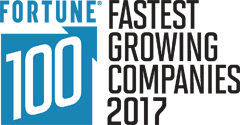New Industry Tools That Could Change the Way You Do Business
Times have changed for financial advisors. The advent of new technology has made it possible for independent advisors and smaller houses to compete with larger firms, and for larger firms to have a global reach. Keeping up with that technology can be a challenge — but it’s vital for any financial advisor who wants to stay competitive.
Today’s clients want savvy, responsive financial advisors who are comfortable with technology. Fortunately, new industry tools are easy to use and integrate to provide top-level customer service and performance. “You don’t have a shot if you’re not organized,” says Jason Lara, director of sales and strategy at Ebix.
Here are some new industry tools that can change the way you do business.
Client Management
Being able to manage your clients through scheduling and CRM platforms, as well as provide them excellent advice through market research tools, are among the biggest benefits of using new industry tools. For example, an adviser might get a lead from their website who wants to buy life insurance. Integrated communication tools, like TimeTrade, can help the advisor set up a meeting with the client by giving them immediate access to the advisor’s calendar, allowing the client to pick a time the advisor is next available. By using Microsoft Exchange and SmartOffice Exchange Sync, that new client activity will automatically and immediately pop-up in the advisor's phone/tablet and Outlook, as well as make a note of the activity in the Client Record in the CRM. In preparation for the meeting, the advisor can then push the client data to another program to research products on a website such as VitalSales that compares the client’s age and health information with the kinds of policies that are offered.
Once the best product is selected, the advisor can run a policy illustration through Winflex, and then use a tool like Assurance’s Ensight to give the advisor an easy to understand and interactive presentation to present to the client. Once the client has a life insurance policy, the door is open for the advisor to make further financial recommendations in the client's best interest by using financial planning tools such as eMoney or MoneyGuidePro. The result, Lara says, is an integrated “storyboard” of clients’ needs as they grow in their careers and stages of life.
Compliance and Security
Recent confusion over the fiduciary rule has brought compliance back to the forefront, Lara says, and new tools can help financial advisors stay on top of changing regulations. Once a client adds things like a 401(k) or other retirement vehicles to a portfolio, advisors will need to be aware of compliance issues. Taking advantage of tech platforms that track compliance changes can help.
In addition, many security platforms are aimed at broker-dealers, Lara says, citing Docupace as an example. It provides SEC- and FINRA-compliant paperless systems. Also, Riskalyze can help analyze risk awareness to help advisers and clients make better financial decisions, he says.
Communication
Ensuring that your clients understand their options and keeping them up-to-date on the latest financial innovations can be a challenge, but communication tools can help. Marketing automation platforms can help make client communication automatic, taking the guesswork out of how and when to let clients know about new offerings. One option is Financial Media Exchange, which provides targeted industry-specific newsletters and social media updates to leverage the advisor's social network, Lara says. Another is Marketing PRO which has great content and helps with things like Householding, “You don’t want to send multiple letters to the same household, whether it’s by email or in the mailbox,” he says. These tools not only help with the content but tying them together ensures greater accuracy for marketing correspondence.
Integration
Finally, each tool is valuable in its own way, but getting them to talk to each other seamlessly is the key to getting the most out of each of them. Financial advisors who can integrate their technology through tools such as SmartOffice will be able to boost their efficiency and productivity and ultimately make the lives of the advisor and their staff easier. "Our goal is to bend around the advisor and their Staff, not to bend around the technology," Lara says.
An integration tool like SmartOffice serves like “Grand Central station,” Lara says, pushing and pulling data to and from a variety of sources. The beauty of having everything in one centralized location is that a client’s long history of notes, their financial plan, inforce policy data, and all the little quirks about a household are easy to access across all devices with the ability to push to other industry tools. "All the data is right there and you’re using it to its fullest capability.” he says.
EbixMarketing


